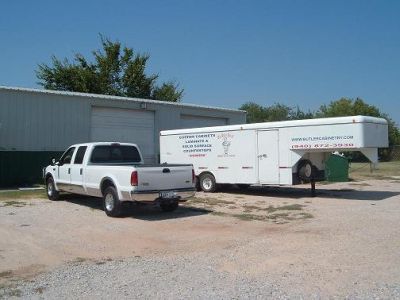Q.
What is the fairest way to split wood when sawing for half? Do you scale the logs before you start, one for me and one for them? Split the lumber board-for-board while sawing? What if you both want different-sized boards? How does everyone else do it?
If you charge by the hour, think about how much you would charge for cutting up a log. Say 1.25 hours for a 24-inch by 8-foot, 6-inch log yielding about 200 BF. Let's also say youíre set up time and travel one way.
Now, how much can you buy a log that size for? I pay 30 cents a BF for logs. I would have 60 bucks in the log. Thatís for very nice logs. If you charge $65 an hour, you would have 2 hours, minimum, for the one log, or 130 bucks. This increases the more logs you saw, making "sawing on the shares" a better deal for the guy with the logs. He gives you 30 bucks worth of log for 125 dollars worth of sawing.
If you do two logs, he gets 2-1/2 hours, and set-up/travel time, so he gets 3.25 hours of sawing in exchange for 60 dollars worth of logs he gives you.
Also, think about value. In log form, the wood is only worth 30 cents a BF (for example). After it's cut, what is it worth, a buck a BF?
So for 30 dollars, this guy donates his half of the log, and he gets
With clear lumber prices between $2,800 and $4,200 per thousand BF, it makes a lot of sense to me. The last cut I did was 10,000 BF of yellow cedar. The lumber was sorted by size, and the bundles were divided in two. The customer took 5,000 and I got 5,000. Total sales value of the lumber that I received after five days of cutting was $17,380. This is infinitely better than our standard sawing rate of $800 per day. ($4,000 per week.)
I take "shares" sawing any time I can get it! Of course, this depends entirely on having a high-value log and a good market for the finished lumber.
I have a lot of people (at least half of those that contact me) that ask about sawing on the halves, but it has usually been yellow pine, which is my most common species to saw, and I don't believe it would pan out to my advantage, or even allow me to break even. I would have to haul my mill out to the site, set up, saw and chunk slabs (I only get assistance about half the time), pull boards and stack them on their trailer and mine, then, after doing this all day, pick up my mill and haul it back to the house (assuing I am finished) and then go back to get my lumber and bring it home to sticker it before it all blue stains up. No thanks.
Besides, I have plenty of pine and oak on my land to choose from. I might do it for something really special if they were choice logs.
Now when someone asks us, we ask them are they going to share blade cost (setting, sharpening, and most of all replacing), fuel cost, insurance, etc. We then give them the phone numbers of the other local sawmillers.
Still, HOW do you split the wood when you do decide to go half. I thought about splitting the logs and taking mine home to mill at my convenience, but another poster brought up a good point about nails and other surprises, and not knowing about them until you cut into the log, making it too late to "share" with the other guy.
I get plenty of free logs for the hauling from local tree services since they often don't have the capability to lift/load log-length stock. I can have it if I haul it; any length I want.
